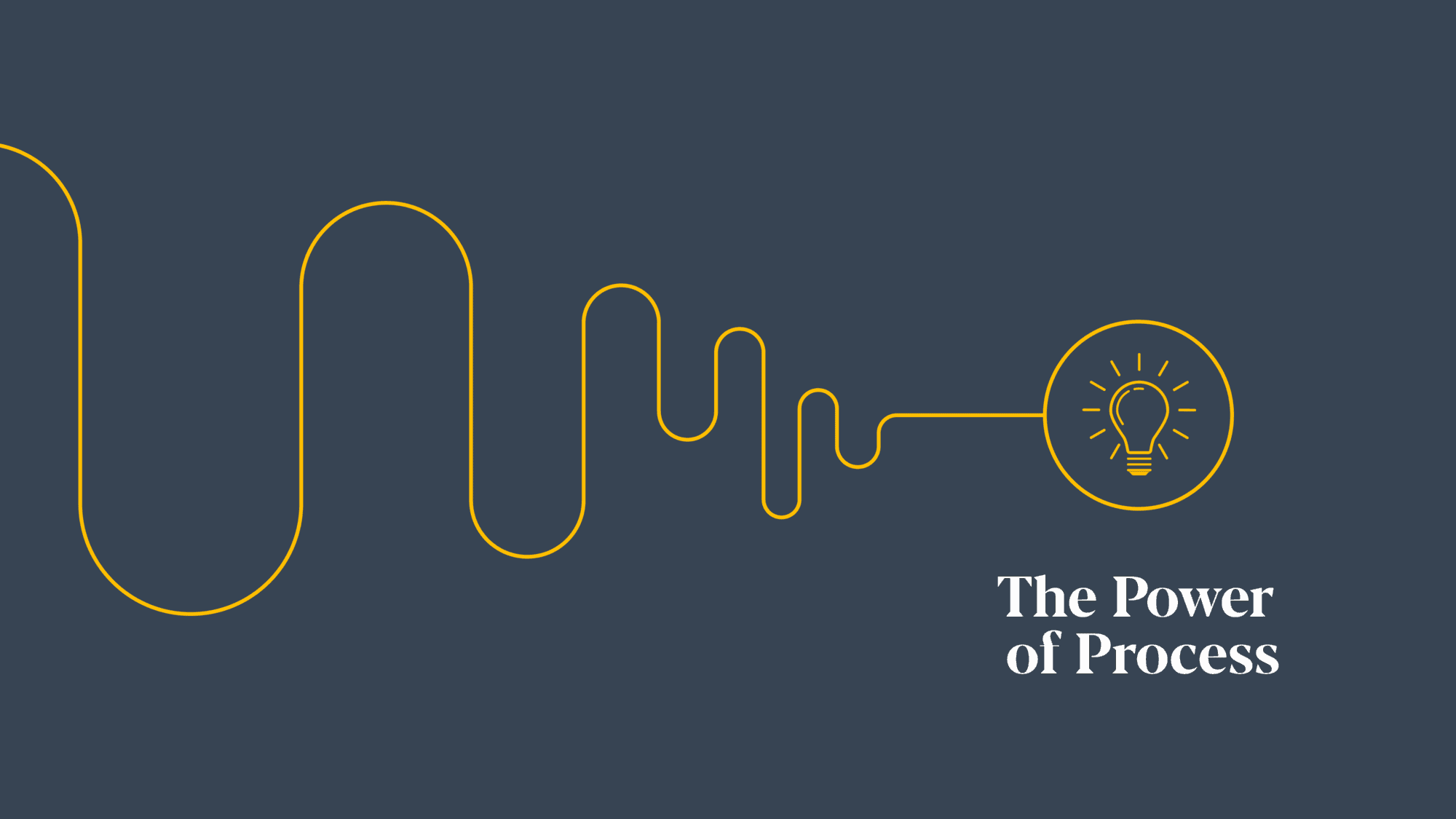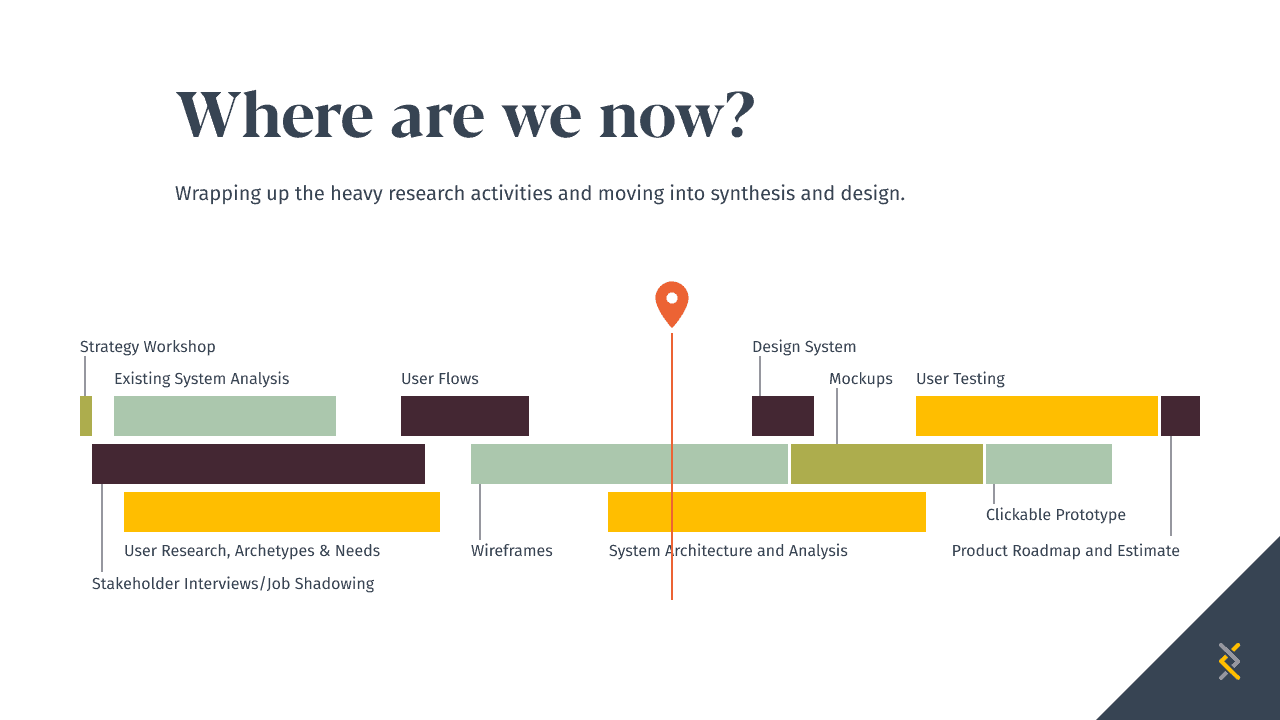
There is no scenario in which productivity and process do not exist together.
Just like Yoda said in The Empire Strikes Back, in that infamous foggy swamp, “Try not! Do… or do not… There is no try.”
Having a process is the same way. In fact, I think one of the original Star Wars scripts has Yoda saying “Process good or process bad…” but it wasn’t as catchy.
Change the Way You Think About Process
One of the biggest blockers to implementing process is a certain mindset. Sometimes people see processes as constraining, confining or stifling. The struggle to create a process and the effort to put it in place seem like huge hurdles. And truthfully when you look at it as if you’re immediately moving from 0 to 100, then yes, that is daunting. And unfortunately, good process doesn’t just happen. It’s born of effort and planning and failure and reconfiguration. You don’t just sit down and create a process—it’s created over time, impacted by each project along the way, it’s created by sitting down and reflecting on the way things are currently done and spending time processing how that can be improved.
But all of this is actually pretty exciting news because that means you’re the one in charge of the process. The process is not in charge of you. Let me be clear – you construct the process. You refine it. You make the rules. And most importantly, you can break the rules. When you have this understanding of process, process becomes an incredible tool. It allows you to know what you need to do next and to know what you just finished. There’s a lot of power in knowing these things. Because when you have a good process that you’re following it’s like having a map for your project. And when you get lost, you know how to find your way back because you know where you were going.
Get Lost in Your Process
When you have a map (process), you always know where you’re at. When you get lost (don’t follow your process), you know how to find your way back (backtrack).
And that’s brilliant because if you’re doing it right, getting lost is a part of the creative process. Creativity itself is like getting lost sometimes—going down rabbit holes and finding new branches of thought to explore. There’s something freeing and energizing about knowing where you are in relation to the grand scheme of the project—the approach to everything has been carefully considered and there’s order amidst chaos. Good process helps remove variables and gets you closer to the right outcomes more of the time, more consistently.
Perfect Your Process and You’ll Have Excellence
If you’ll reflect back on what we’ve discussed so far, I believe you’ll notice a unifying factor. We’re not talking about the end result. When we talk about process we talk about how we get from point A to point B in the best way possible. To frame it differently, let’s look at what U.S. Senator Jerry Moran once said: “Perfection has to do with the end product, but excellence has to do with the process.” When we think of process in this way (as a tool for solving problems, not as a solution in itself) we make room for ourselves to succeed. Because we don’t have to have all of the answers in order to solve the problems. When we build effective processes we give ourselves the tools we need to approach any situation or problem and succeed.
We spoke earlier about how creating your process is the outcome of time, experience and introspective reflection. This is a very valuable way to approach process. Because when you put effort into your process over time, you begin to have a process in place when you start a project. And when you have a process at the beginning of a project it actually saves time throughout the life of the project.
Process isn’t about micromanaging each aspect of itself. And it’s not about having the exact answer for each piece of the puzzle. But it is about identifying a route to follow, thereby preventing oneself from becoming distracted by unnecessary tasks; when you’ve deviated from your todo list, it stops you from wasting time on finding your way back to what needs to be done next. Process keeps your project moving.
Help yourself with process
Process, as defined by Merriam-Webster, is “a series of actions or operations conducing to an end.” Ultimately it’s a bunch of cogs that make a machine. Or, phrased differently, it’s the culmination of several smaller parts that come together to form a whole and accomplish a task. When you know how your machine comes together, you know how each piece works. And when you know how each piece works, you know how to be efficient. And when you know how your process works and will be efficient you know how to accurately charge for your services. Good process equals being profitable. If you know your process, you know how profitable you will be.
A well thought out process isn’t just for oneself – it also introduces a valuable aspect to the client relationship. Having an elevated process gives the client a better experience. Here at Simple Thread, we have defined our process and it allows us to tell an amazing story with your product. Here’s an example from one part of our process. We utilize this timeline to communicate with our clients where we are at in the process. This is our road map that allows us to explore and navigate the waters of discovery. This is a valuable tool that helps set expectations for all involved.

Our process has five threads that weave together to form a framework that guides the way we collaborate and build. If you’re interested in diving a little bit deeper into the threads of our process, head over to our Process page and we’ll walk through how we use process to bring value to your experience.
Loved the article? Hated it? Didn’t even read it?
We’d love to hear from you.



